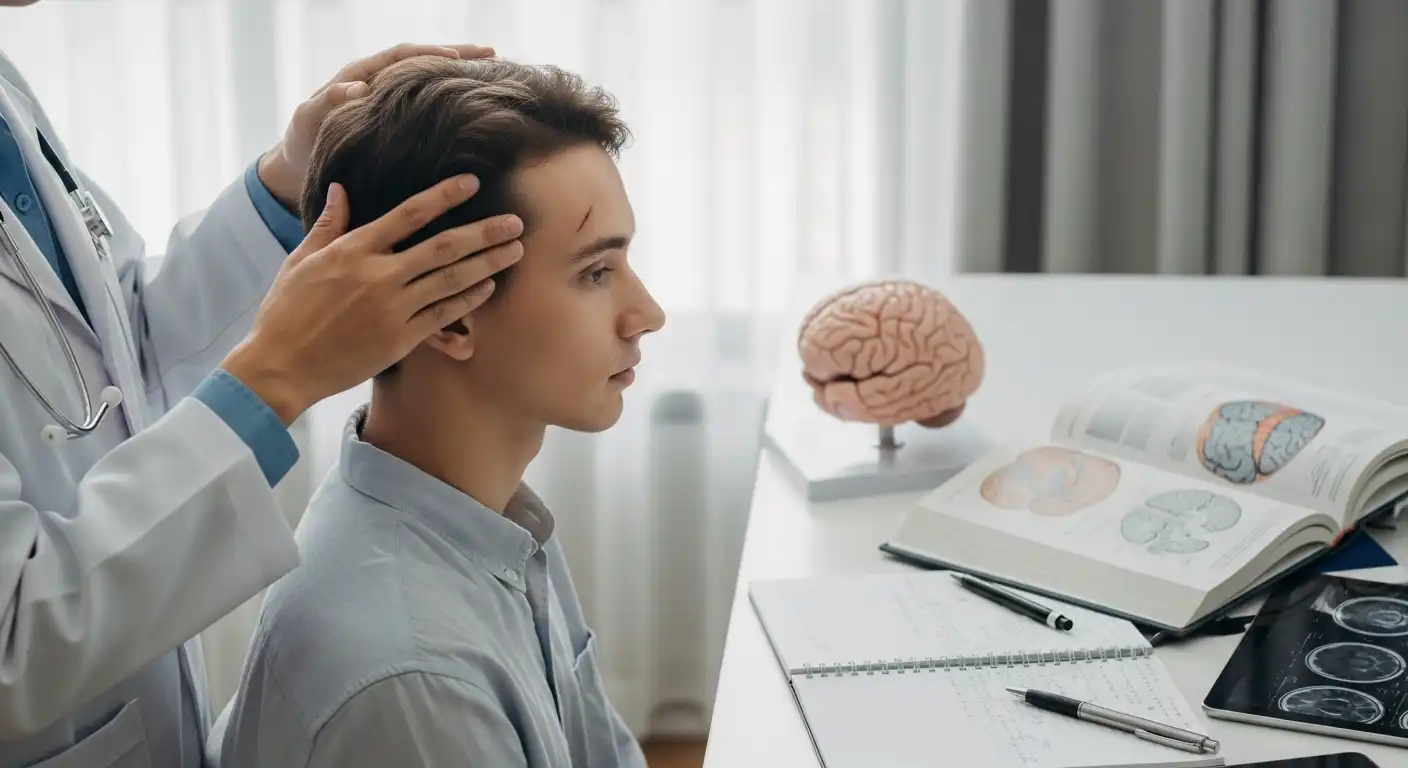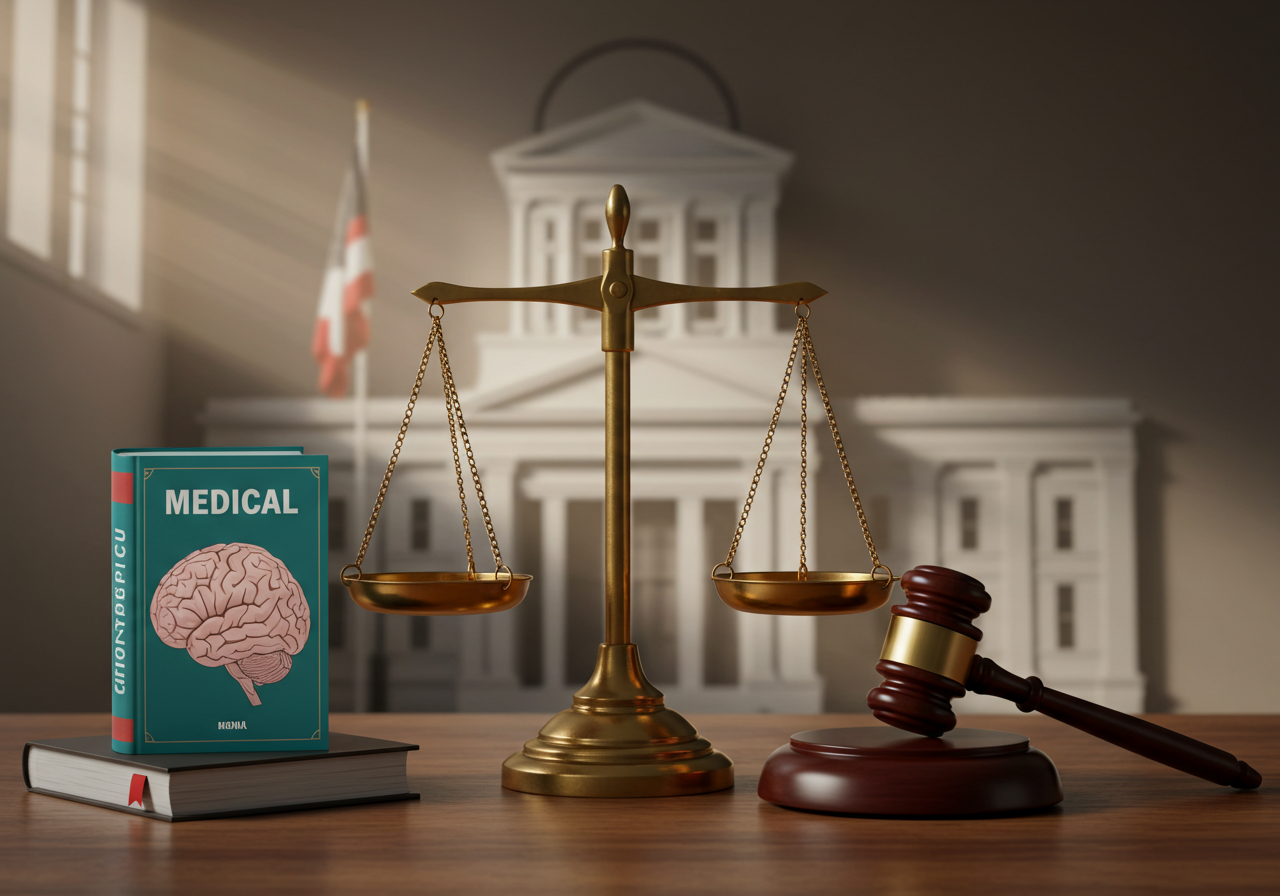For decades, traumatic brain injury (TBI) evaluation has relied on tools like the Glasgow Coma Scale and standard imaging. But in 2025, a new framework for diagnosing and classifying brain injuries is emerging—one that uses biomarkers, advanced imaging, and personalized clinical data. This modern approach may soon redefine how injury severity is measured and how brain injury claims are handled in California courts.
Why Change Was Needed
 Medical experts have long recognized the limits of the traditional Glasgow Coma Scale (GCS). While the GCS is useful for initial triage, it often fails to reflect subtle but serious brain damage. Many victims with so-called “mild TBIs” suffer chronic cognitive, emotional, and physical symptoms that the old tests overlook.
Medical experts have long recognized the limits of the traditional Glasgow Coma Scale (GCS). While the GCS is useful for initial triage, it often fails to reflect subtle but serious brain damage. Many victims with so-called “mild TBIs” suffer chronic cognitive, emotional, and physical symptoms that the old tests overlook.
The new 2025 assessment criteria aim to close that gap. By integrating biomarkers—chemical signals in blood or cerebrospinal fluid—with cutting-edge neuroimaging and individualized health data, doctors can get a clearer picture of each injury’s true impact.
According to UCSF neurologists, these updates will “reveal the hidden injuries” that traditional scans miss, offering new opportunities for treatment—and for legal advocates, stronger evidence of real, lasting harm.
What’s New in the 2025 Brain Injury Criteria
Here are the main changes coming in the 2025 brain injury assessment model:
- Biomarkers: Medical professionals will test for specific proteins—like GFAP and UCH-L1—that indicate cellular damage or inflammation in the brain.
- Advanced Imaging: Techniques such as diffusion tensor imaging (DTI) and susceptibility-weighted MRI provide detailed views of white matter damage and microbleeds invisible on standard scans.
- Clinical Data Integration: Doctors will combine imaging, biomarkers, patient history, and symptom patterns to generate a multi-dimensional assessment rather than a single score.
- Time-Based Tracking: Follow-up testing over weeks or months can show how injuries evolve, improving accuracy in diagnosing long-term impairment.
This framework creates a richer dataset for both medicine and law, turning subjective symptoms into measurable evidence.
How the New Criteria Impact California TBI Claims
These scientific advancements don’t just improve medical care—they also change how attorneys and insurers approach TBI litigation. Here’s how:
1. Stronger Evidence of Injury Severity
Many clients are told their injuries are “mild” because a CT scan came back normal. Under the new model, even mild concussions can reveal cellular or microstructural damage. Biomarker tests and high-resolution imaging give lawyers more powerful evidence when proving the full extent of a client’s injuries.
2. Improved Causation Arguments
One of the toughest challenges in brain injury cases is proving that the accident directly caused the damage. The new biomarker approach can show when the injury occurred—differentiating between pre-existing brain conditions and fresh trauma from the accident. This timeline-based evidence can strengthen causation and defeat common defense arguments.
3. More Accurate Long-Term Damage Predictions
Insurance companies often underestimate how long TBI symptoms will last. With measurable indicators and follow-up biomarker data, attorneys can project future medical costs and pain-and-suffering damages more accurately. This helps secure fairer settlements and trial outcomes.
4. Changing Admissibility and Expert Testimony
As these tests gain acceptance, expert witnesses in California courts will rely more heavily on medical data rather than subjective complaints. Lawyers should be prepared to work with neurologists, radiologists, and neuropsychologists familiar with these new standards to ensure their testimony meets evidentiary rules under California law.
Steps California Brain Injury Victims Should Take
 If you’ve suffered a head or brain injury after a car crash, fall, or workplace accident, these new assessment tools can strengthen your case—but only if used early. Here’s what to do:
If you’ve suffered a head or brain injury after a car crash, fall, or workplace accident, these new assessment tools can strengthen your case—but only if used early. Here’s what to do:
- Request advanced diagnostic testing. Ask your doctor about MRI-DTI scans or biomarker panels if your symptoms persist despite normal CT results.
- Keep detailed records. Track all medical visits, test results, and changes in symptoms. Consistent documentation helps connect your injury to the accident.
- Consult a California brain injury attorney familiar with medical advances. Legal teams who understand these tests can use them effectively in settlement negotiations or at trial.
- Avoid early settlements. Wait until you have full medical clarity—some effects of TBIs emerge months later, and new tests can reveal hidden damage.
Example: From “Mild” to Major Evidence
Consider a client injured in a rear-end crash. At first, emergency room scans showed no bleeding or fractures, and she was diagnosed with a “mild concussion.” Months later, she still experienced headaches, fatigue, and memory loss. Under the new 2025 assessment, biomarker levels and diffusion imaging revealed widespread axonal injury. With this data, her attorney proved a severe TBI, increasing her settlement by over 40%.
Cases like this demonstrate why adopting the new criteria can change the outcome of injury claims—by replacing assumptions with objective science.
Challenges Ahead
While promising, the 2025 model brings some hurdles for both medicine and law:
- Cost & access: Advanced scans and biomarker testing are expensive and not yet available in every facility.
- Standardization: Courts and hospitals need consistent methods for interpreting new data to prevent conflicting expert opinions.
- Admissibility: Defense attorneys may challenge the reliability or relevance of new tests until they become widely accepted in California courts.
Despite these challenges, the benefits far outweigh the drawbacks. As courts grow familiar with the data, expert witnesses can cite peer-reviewed research to validate these methods.
Legal Strategy for Attorneys
For attorneys handling TBI cases in 2025 and beyond, here’s how to leverage these developments:
- Partner with neurologists and medical experts familiar with new diagnostic tools.
- Use before-and-after imaging or biomarker comparisons to visualize damage progression.
- Frame your narrative around objective evidence rather than subjective symptoms.
- Educate juries through visual aids—brain scan images and biomarker graphs are persuasive tools.
Combining medical innovation with strong legal storytelling can help maximize compensation for California TBI victims.
Conclusion
The 2025 brain injury assessment update marks a new era in how medical and legal professionals approach TBI. By incorporating biomarkers, advanced imaging, and individualized data, victims can finally present clear, objective proof of their suffering. For California attorneys, this means stronger evidence, higher credibility, and fairer settlements.
If you or a loved one sustained a brain injury in California, contact our team for a free consultation. Learn how these new diagnostic tools can strengthen your case and help you recover the compensation you deserve.


